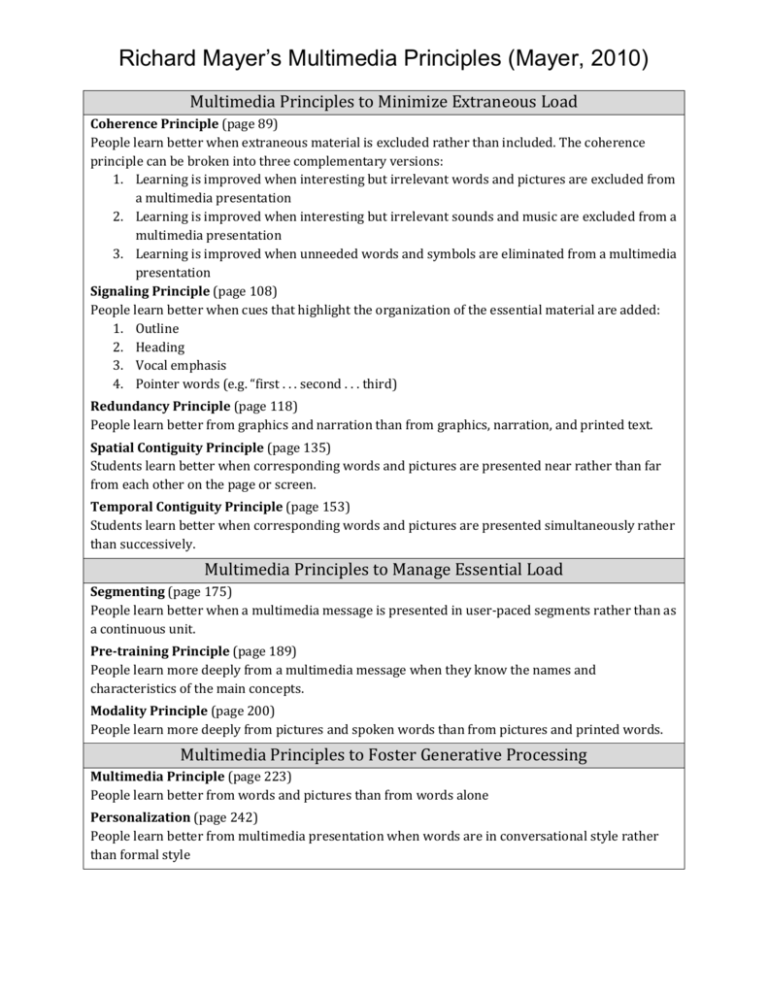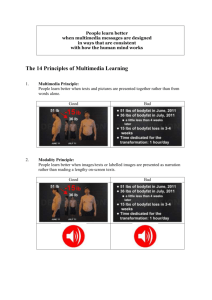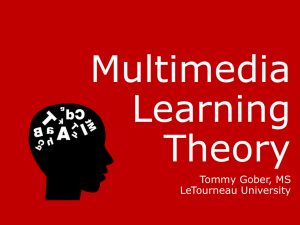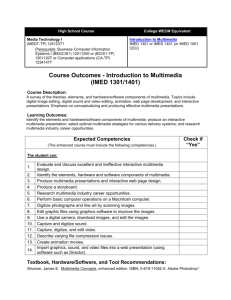handoutmmprinciples
advertisement

Richard Mayer’s Multimedia Principles (Mayer, 2010) Multimedia Principles to Minimize Extraneous Load Coherence Principle (page 89) People learn better when extraneous material is excluded rather than included. The coherence principle can be broken into three complementary versions: 1. Learning is improved when interesting but irrelevant words and pictures are excluded from a multimedia presentation 2. Learning is improved when interesting but irrelevant sounds and music are excluded from a multimedia presentation 3. Learning is improved when unneeded words and symbols are eliminated from a multimedia presentation Signaling Principle (page 108) People learn better when cues that highlight the organization of the essential material are added: 1. Outline 2. Heading 3. Vocal emphasis 4. Pointer words (e.g. “first . . . second . . . third) Redundancy Principle (page 118) People learn better from graphics and narration than from graphics, narration, and printed text. Spatial Contiguity Principle (page 135) Students learn better when corresponding words and pictures are presented near rather than far from each other on the page or screen. Temporal Contiguity Principle (page 153) Students learn better when corresponding words and pictures are presented simultaneously rather than successively. Multimedia Principles to Manage Essential Load Segmenting (page 175) People learn better when a multimedia message is presented in user-paced segments rather than as a continuous unit. Pre-training Principle (page 189) People learn more deeply from a multimedia message when they know the names and characteristics of the main concepts. Modality Principle (page 200) People learn more deeply from pictures and spoken words than from pictures and printed words. Multimedia Principles to Foster Generative Processing Multimedia Principle (page 223) People learn better from words and pictures than from words alone Personalization (page 242) People learn better from multimedia presentation when words are in conversational style rather than formal style











